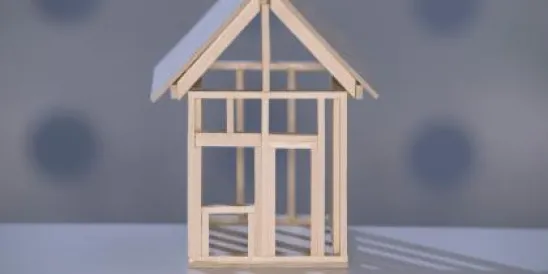Many of us in commercial real estate feel that the recession is over, and thank heaven for that. However, in some ways we are still reacting to the complications the recession worked on our business, and we need to have a clear understanding of what is legally possible, as well as a creative strategy, in order to find the best resolution for a partially built project.
I am frequently asked by lenders or developers who want to buy an unfinished condominium project from a foreclosing lender, whether a condominium project can be altered or shrunk to reduce the condominium project itself to only those condo units which were actually built or sold to outside buyers, and to sell the “extra land” for cash, or use it in a different configuration or for a different use. It may be easy to draw a line on a map but in reality, altering the layout of a declared condominium or deleting land from the condominium project altogether, is very difficult to do; difficult, but not impossible. For purposes of this article, the word “condominium” refers to the whole project, not to an individual unit in a project, which is the common vernacular.
There are many good reasons to want to shrink a condominium project, including:
-
giving the existing unit owners greater say on the Association board and greater control over the condominium budget,
-
removing any need to seek approval of the existing unit owners for development of the extra land,
-
reducing the real estate taxes charged to each unit by reducing the amount of land included in the common elements,
-
allowing empty unbuilt areas to be sold for other uses and using the cash proceeds of that sale to reduce the outstanding loans owed by the Declarant, or
-
paying for needed amenities or improvements the bankrupt Declarant can no longer fund, and making the condominium project comply with FNMA and other secondary mortgage market requirements, so that individual unit owners can more easily secure financing and sell more units.
If the “empty field” is not actually in the condominium project, that is, if it was not included in the legal description of the Condominium Declaration or its amendments, but was only identified as an “expansion area,” the process may be simple, requiring only a review to make sure there are no cross easements or agreements needed to allow the condominium project and the “extra land” to be operated separately.
If the “empty field” however was already included in the condominium project, it is much more difficult. All of that area will either be defined as a “unit,” owed by an individual owner, or “common element,” owned in common by all unit owners. The Condominium Statute in Wisconsin allows amendment of the Declaration in several different ways, and for several different purposes. For example, expansion of the condominium project into previously identified “expansion areas” during the period of Declarant control, can be accomplished unilaterally by the Declarant. Some technical cleanup amendments may also be signed in the same way. If the initial Declaration allowed it, only affected unit owners may amend the Declaration to merge their units into larger spaces or divide them into smaller pieces. This power could be used, for example, to change a single family home lot style condominium unit, into duplex or fourplex style units. Some amendments can be accomplished with the affirmative consent of 2/3 of the owners of all units in the Condominium. However, removing land which is currently in the condominium, and pulling it out again, requires the consent of 100% of the unit owners, and consent of their lenders.




 />i
/>i

